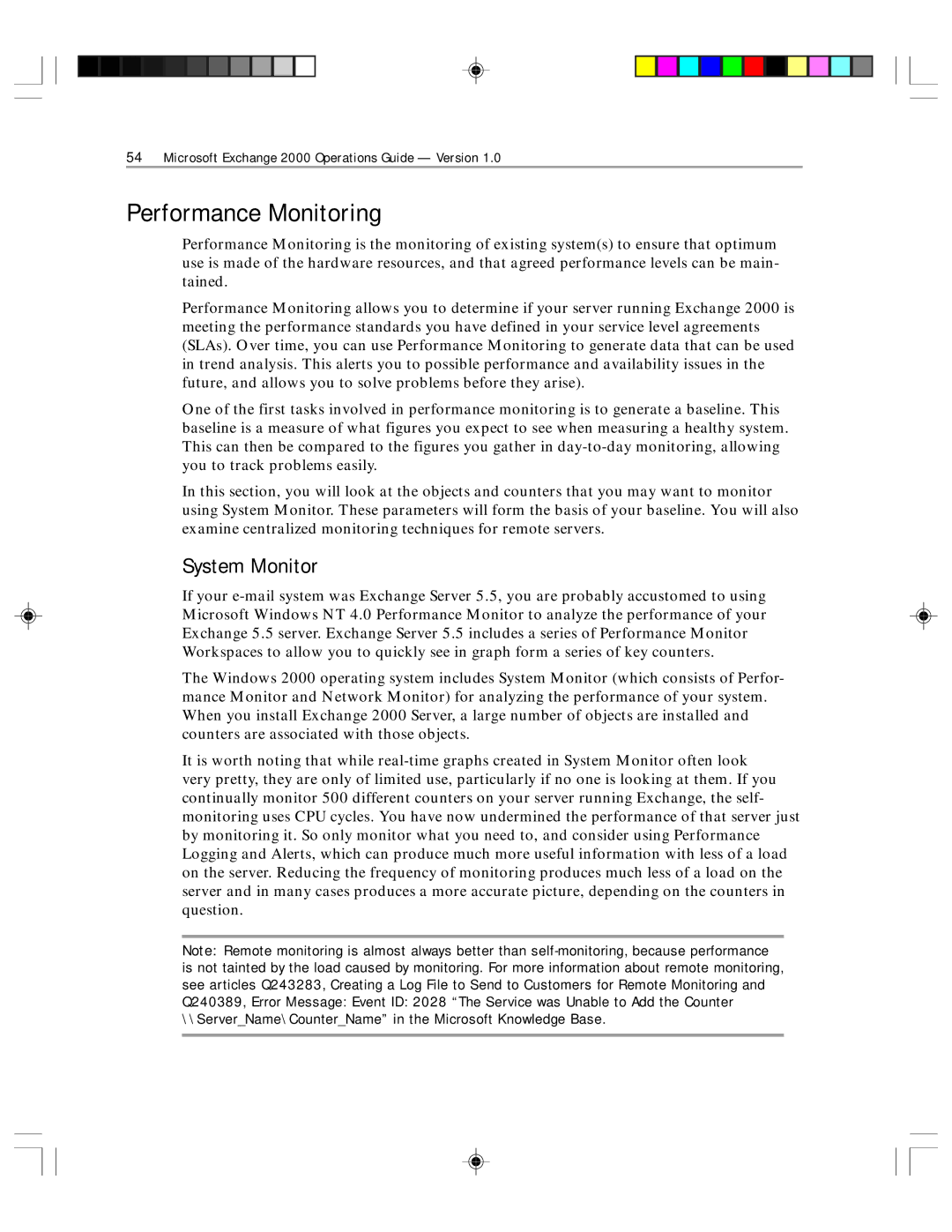
54Microsoft Exchange 2000 Operations Guide — Version 1.0
Performance Monitoring
Performance Monitoring is the monitoring of existing system(s) to ensure that optimum use is made of the hardware resources, and that agreed performance levels can be main- tained.
Performance Monitoring allows you to determine if your server running Exchange 2000 is meeting the performance standards you have defined in your service level agreements (SLAs). Over time, you can use Performance Monitoring to generate data that can be used in trend analysis. This alerts you to possible performance and availability issues in the future, and allows you to solve problems before they arise).
One of the first tasks involved in performance monitoring is to generate a baseline. This baseline is a measure of what figures you expect to see when measuring a healthy system. This can then be compared to the figures you gather in
In this section, you will look at the objects and counters that you may want to monitor using System Monitor. These parameters will form the basis of your baseline. You will also examine centralized monitoring techniques for remote servers.
System Monitor
If your
The Windows 2000 operating system includes System Monitor (which consists of Perfor- mance Monitor and Network Monitor) for analyzing the performance of your system. When you install Exchange 2000 Server, a large number of objects are installed and counters are associated with those objects.
It is worth noting that while
Note: Remote monitoring is almost always better than
